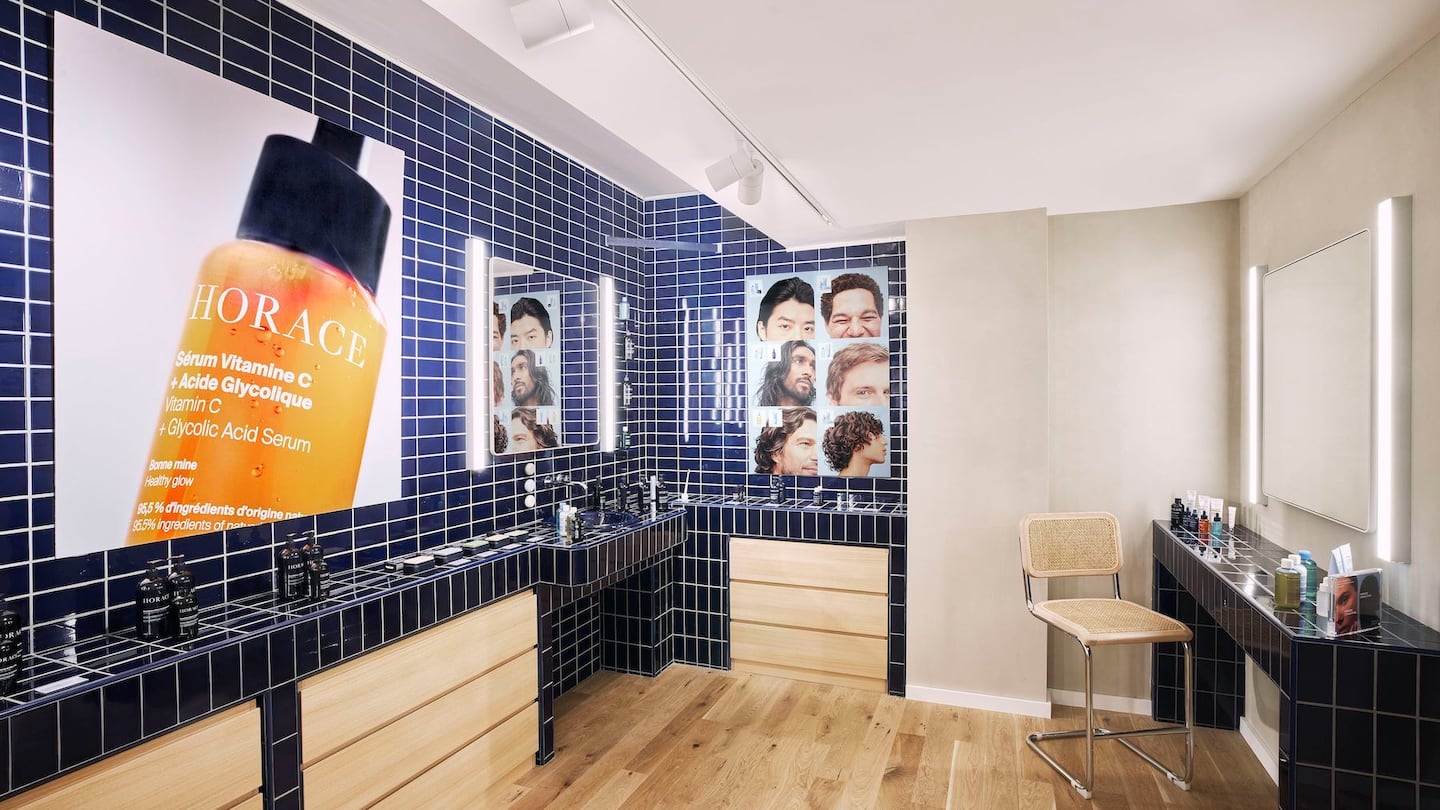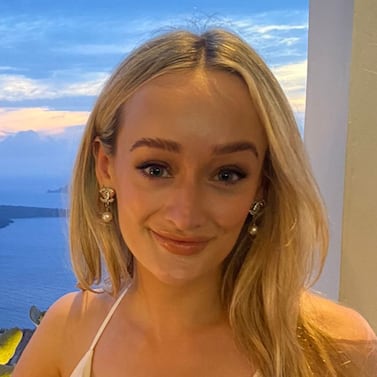
The Business of Fashion
Agenda-setting intelligence, analysis and advice for the global fashion community.

Agenda-setting intelligence, analysis and advice for the global fashion community.

Marc Briant-Terlet, co-founder of upmarket men’s label Horace, finds it odd that many of its competitors choose to appeal to male customers via their wives, girlfriends or female family members.
“We [men] have credit cards and cheque books. We can spend our own money,” said Briant-Terlet.
While relatively unknown in the global market, in its native France, seven-year-old Horace has grown to be an influential and meaningful size in the men’s beauty market. The private equity-backed line has opened fifteen stores in France in the last three years, and in 2023 the brand generated 20 million euros ($21 million) in sales, ten times the revenue it made four years ago. Whereas many men’s lines take a somewhat gruff, hyper-masculine approach, Horace credits its sophisticated marketing and messaging for its results. There’s serums with buzzy ingredients like panthenol and hyaluronic acid, cotton pads made from unbleached material, claims around natural ingredients and even a newly launched dermaroller. Prices range from $10 to $27.
Now, the line has set its sights on global domination. International sales are 15 percent of the brand’s revenue, with the UK representing ten percent of total sales. The company plans to open ten stores in the UK by 2026. The first opened on Jan. 8 in London’s Covent Garden; products are now also available in the high-end pharmacy John Bell & Croyden. Making inroads in the US is its next priority; it launched DTC e-commerce in the region just last year.
ADVERTISEMENT
Briant-Terlet is aware there’s still a way to go. “There is still a sexist, homophobic stigma about beauty for men,” he said.
Globally, the men’s beauty market has yet to mature. Its potential is valued as high as $150 billion worldwide, but male consumers are stubbornly slow to embrace the concept of multi-step skincare routines or wearing cosmetics. Next-gen brands have seen their share of troubles despite their ambitions: in 2023, men’s skincare line Disco declared bankruptcy and closed its doors, while Faculty, a nail polish line for men that received investment from Estée Lauder Companies in 2021 also went out of business.
Attempts to crack the men’s market are scattergun, ranging from global brand offshoots (L’Oréal Men Expert, Clarins for Men, Nivea Men) to mass-market and gritty (Bulldog, Jack Black). Other companies such as Harry’s have expanded to skincare after recruiting customers via razors and shaving paraphernalia.
Joël Palix, founder of beauty consultancy Palix Unlimited, said the question of whether men are ready for beauty has persisted for years. Recalling his past tenure at Clarins, he said, “Twenty years ago, we were launching a men’s range, and we were trying to predict whether it would be 25 percent of our business, or two.”
Brand founders often point to Asia, where men’s beauty is better established as a category, or research that suggests shifts in pop culture are going to spur men into picking up premium products as rationale for the sector’s growth.
But Ransley Carpio, head of venture investments at e-commerce company Front Row, observes a delta between what he sees in trend reports about the market versus actual usage. “I don’t know anybody that’s really attached to any one of these brands,” he said.
He also points out that many of the most successful, male-orientated brands are much more niche, giving the example of Mad Rabbit, which focuses on tattoo aftercare, and Below The Belt, which offers intimate grooming.
Facing these odds, Horace is staying lean. Briant-Terlet and his co-founder Kim Mazzilli bootstrapped the brand for over a year before taking investment from angels such as Alexandre Mattiussi, the founder of fashion line Ami Paris. Now, its sole investor is the venture capital and private equity firm Invus. Briant-Terlet said its domestic business will become profitable in 2024, having focussed more on customer retention than acquisition in its early days.
ADVERTISEMENT
Prior to founding Horace, Briant-Terlet was a fashion journalist, and initially seeded the product out to those he regarded as tastemakers, including architects and designers. By doing so – and employing minimalist, suave branding – the line has targeted urbanite, affluent men. However, even sophisticated men who wear Le Labo and stack their coffee tables with Cire Trudon candles aren’t necessarily confident about shopping for skincare.
Another issue with the men’s market is accessibility, as there’s not a natural place for men to go and discover new brands, said Carpio, adding that many men don’t want to spend much time shopping, and prefer multi-functional products.
Horace is making a bold gambit by banking on their own brick-and-mortar stores. The Covent Garden store has space for skin and consultations, is bedecked in marble and features a bespoke painting commissioned from the portrait artist Gaétan Vaguelsy.
It’s also banking on more specialised products: including the aforementioned serums and dermaroller, there’s also toothpaste and concealer. The brand’s best-sellers are more quotidian, however: a mattifying moisturiser, a facial scrub and an SPF cream, indicating where even more polished men’s skincare literacy levels line.
The other challenge men’s brands have is around influence. Brands catering to women, or taking a unisex approach, have a raft of creator talent they can partner with to promote products and increase awareness. But Horace has found that men don’t respond to influencers so well, with Briant-Terlet saying professional creators don’t tend to convert.
Education is what will make further growth and change possible, says Briant-Terlet. “[Our top-performing] content is someone showing you how to do step one, step two [of a skincare routine] and so forth,” he said. “We have to make men comfortable using the product.”
Briant-Terlet also said he was very influenced by Dove advertisements growing up, and liked their ethos around “real” beauty.
So-called “French girl” beauty is a wildly popular idea. Western women in a number of countries are motivated by what French women wear, the food they eat and the beauty products they do – or don’t – use. In the anglophone world, the “French girl” has a clearly defined aesthetic, with flawless skin, light make-up, insouciant hair and a signature scent – and clear marketing power.
ADVERTISEMENT
However, the same does not apply for men. Briant-Terlet says he has not found men to be especially motivated by the idea of the brand’s Frenchness. While the brand plans to lean on it somewhat for the UK rollout – the Covent Garden store will serve croissants and chocolat chaud – other promotions are decidedly more British. Advertising on London’s iconic black taxis is underway, and Briant-Terlet also says the brand still sees good results from paid social media advertising. Collaborations have also been lucrative: past partnerships are as diverse as French streetwear brand Bisous Skateboards and the nail care line Manicurist.
Briant-Terlet is undeterred by Gallic sensibilities not translating. Instead, he says the brand is trying to create lasting behaviour change amongst men, and empowering them to buy for themselves – aside from the holiday gifting season, he says 85 percent of its customers are male.
Briant-Terlet sees a sea change on the horizon. “We met with Monoprix [French retailer] many times,” he said. “It was always ‘non’. But in 2021, something shifted.” Now, the brand is carried in 167 stores.
Editor’s Note: This story was updated on Jan. 24, 2024, to clarify that the UK makes up 10 percent of overall sales, not 10 percent of international sales.
Now that the market has stabilised, beauty brands of all shapes and sizes are eager to get their dues. The Business of Beauty identifies the top targets of the year including Kosas, Summer Fridays and Selena Gomez’s Rare Beauty.
Beauty brands are readying for another tumultuous year. Demand is strong, but growth remains challenging with rising customer acquisition costs and a bearish funding climate.

Daniela Morosini is a Beauty Correspondent at The Business of Beauty at BoF. She covers the global beauty industry, with an interest in how companies go to market and overcome hurdles.
How not to look tired? Make money.
In a rare video this week, the mega-singer responded to sceptics and gave the public a look at what her beauty founder personality might be.
Request your invitation to attend our annual gathering for leaders shaping the global beauty and wellness industry.
Excitement for its IPO is building, but in order to realise its ambitions, more acquisitions and operational expenses might be required.